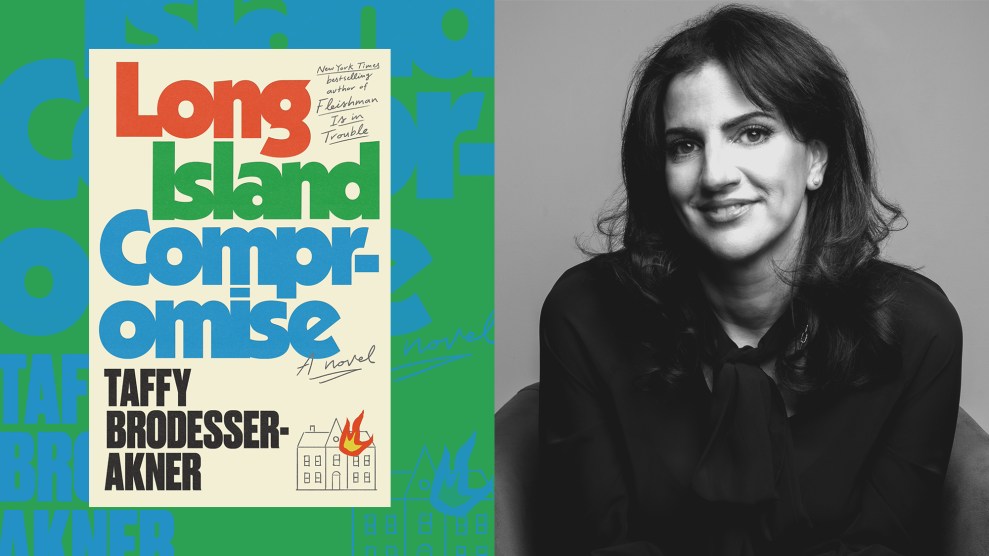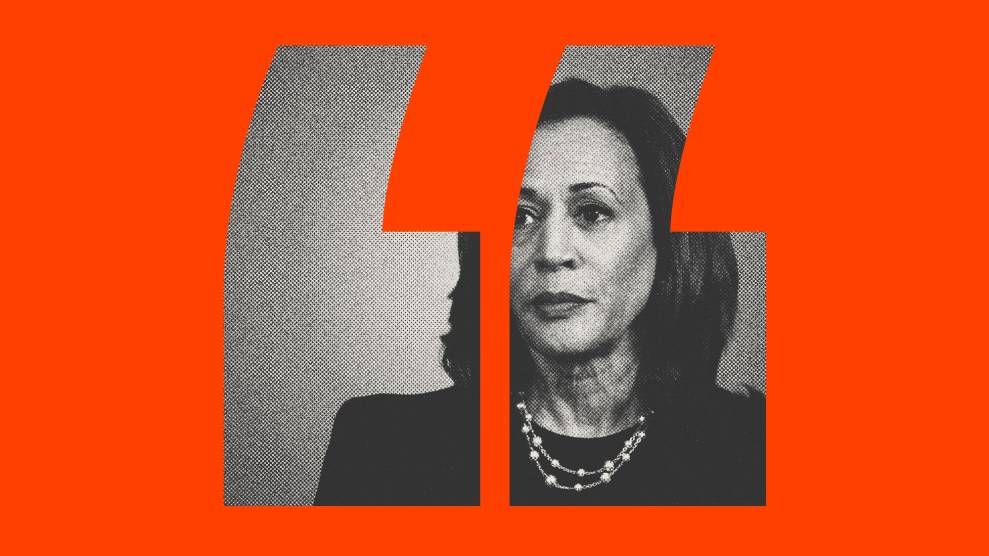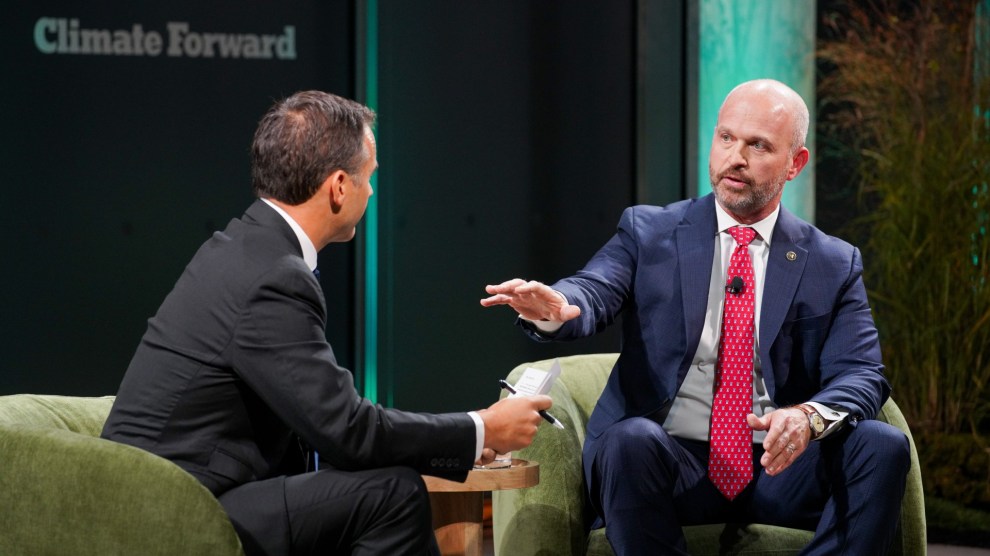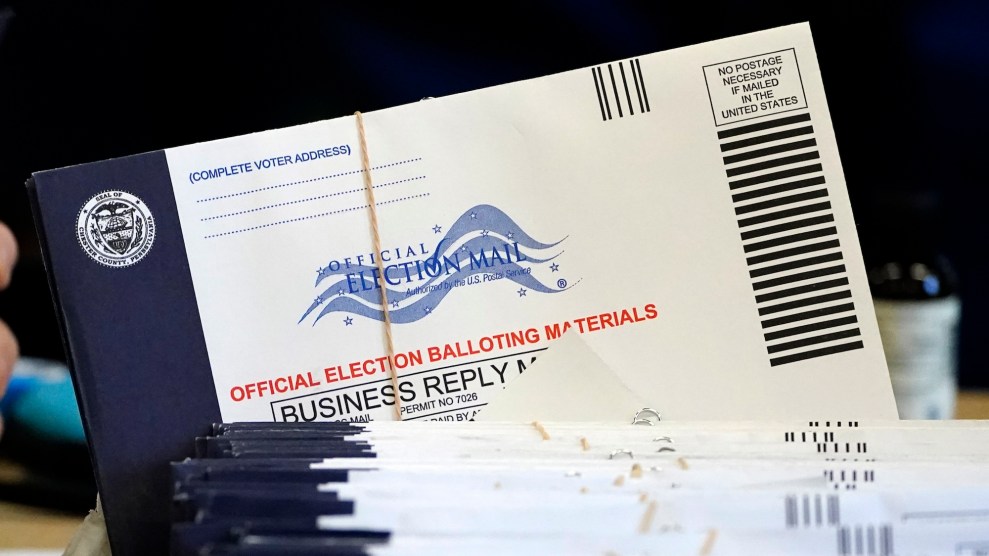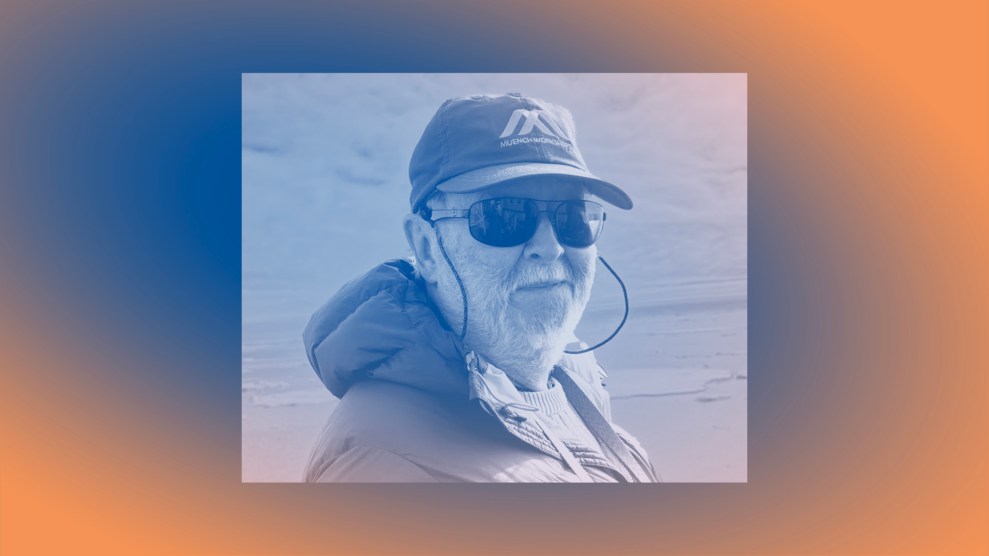
Mother Jones illustration; photo courtesy of Karen Klingel
At the time this magazine was born, nearly 50 years ago, America had finally left Vietnam, Richard Nixon had just resigned, Gerald Ford was his unelected (and unloved) successor, and the ’60s were feeling very much over.
For those of us who thought a new voice was needed in that fraught and barren moment of American history, the opportunities seemed large—except that none of us had ever launched a national magazine.
How to find subscribers? We didn’t know. What to pay for printing—who knew that? How to negotiate contracts for national newsstand sales or buy 2 million—or 20 million?—envelopes at the best price? Not a clue.
What about hiring the perfect fulfillment house? We had no idea. (A couple of us thought, when first told the term, that it was some sort of lame reference to a brothel.)
And then John Klingel showed up.
In his early 30s, John was an old guy compared to most of us, and he had a decade of magazine experience, starting with the publishing giant McGraw Hill. He was the circulation director of Learning magazine, an innovative magazine aimed at K–12 teachers based in Palo Alto, not too far from Mother Jones’ home base in San Francisco.
John and I met through a mutual friend, and after quickly recognizing how much he knew about things my co-founders and I should have known, I recruited his help—which, over the next decade, he gave graciously and unstintingly.
He helped us find printers, mailing houses, and newsstand distributors. He got us to what turned out to be the perfect fulfillment house. Gifted with the suffering patience of Job, he gradually taught us the byzantine intricacies of subscription solicitation and management, the importance of constant testing, and the subtle trade-offs of copy versus price versus term—and the no-less-intricate accounting and forecasting that allowed Mother Jones to take off like a rocket after its first issue in February 1976.
Most good organizations have a few quiet heroes. Rarely it’s the man or woman at the top—instead they’re the ones who work behind the scenes, who move the important work along, who help quietly formulate and articulate goals and then collaboratively coordinate the means for achieving them.
John fully lived that role for us, all the while pursuing his own extraordinary magazine career, one that would take him eventually to a vice presidency at Time Inc., the presidency of Reader’s Digest’s global magazine operations, and finally the Publishing Hall of Fame.
I teased him once about how he could reconcile working for both Mother Jones and ultra-conservative Reader’s Digest. “Look, Richard, I believe in ink and paper,” he quipped. “What Mother Jones does with those is up to you.”
John’s own politics were unquestionably but quietly progressive—and his judgment was bankably shrewd, always carefully weighed and reasoned. His father had been a talented engineer recruited to work during World War II on the Manhattan Project, and John had inherited an engineer’s instinct for numbers, rigor, and careful calculation, and what they could teach that passion and values alone couldn’t.
After the war, his father had moved the family to Titusville, a prosperous small town in the central Pennsylvania hills with a singular claim to fame: It was the site of the world’s first successful oil well, dug there just before the Civil War. Until gigantic new oil field discoveries in Texas and California overshadowed Appalachian Pennsylvania, tiny Titusville was the world’s leading petroleum producer.
Titusville has a second claim to fame as well: It was the home of Ida Tarbell, whose legendary exposés of the Rockefellers and Standard Oil at the dawn of the 20th century helped create the Progressive Era and led to the breakup of Standard Oil’s monopoly. The form of journalism she pioneered would come to be called “investigative reporting.”
In postwar Titusville, John grew up in a Frank Lloyd Wright–inspired house and was educated in private schools where he both excelled academically and earned a reputation for imaginative mischief, a penchant that I always thought partly explained his affection for progressives. His engineering instincts favored order—but his love of mischief objected to too much order.
He went to nearby Penn State, where he trained in accounting and marketing, and gravitated after graduation to New York City and McGraw Hill, where he discovered in magazines not only his pride but his passion.
The man I knew took pride in doing not just the technical—the “paper and ink” stuff—but everything well. The complexities of publishing always excited, never daunted him, and like his father, he thrived on challenge, not just in helping us build Mother Jones out of nothing, but in building Reader’s Digest into the world’s best-selling magazine, published in 70 countries in 21 languages.
In retirement, John threw himself into a new passion—nature photography. It took him to six continents, including remote regions of Patagonia, Borneo, Hudson’s Bay, Kenya, Brazil, and the Falklands. Soon enough, and this was so typically John, he began teaching wildly popular seminars on the latest advances in digital photo technology.
In July, flying back via Oslo from the Arctic Circle—where he’d been shooting a new series on Arctic bird life—he suffered a massive heart attack over the mid-Atlantic. It took more than three hours for the plane to reach Boston. He was admitted to Mass General but by then, there was little the doctors could do. He died quietly, age 82, soon afterward. His wife, Karen, and daughter, Holly, and three grandchildren survive him; his son John predeceased him.
Among the many memories of John that will endure is his legacy as one of Mother Jones’ quiet heroes.


